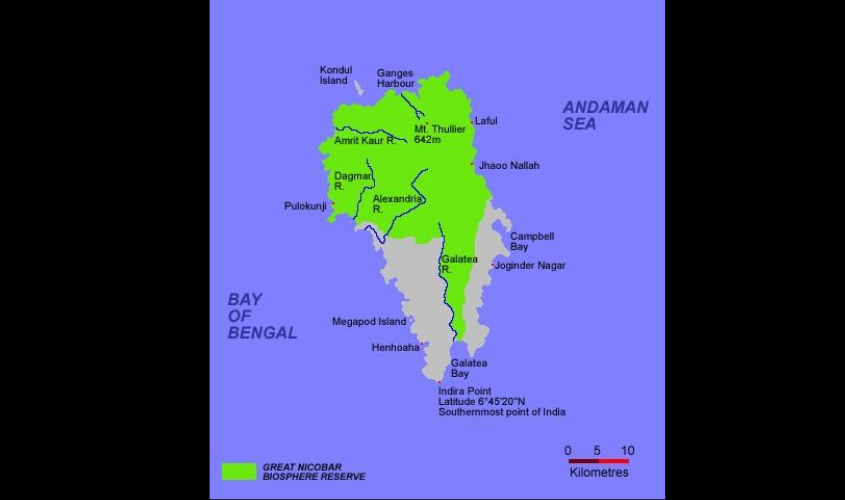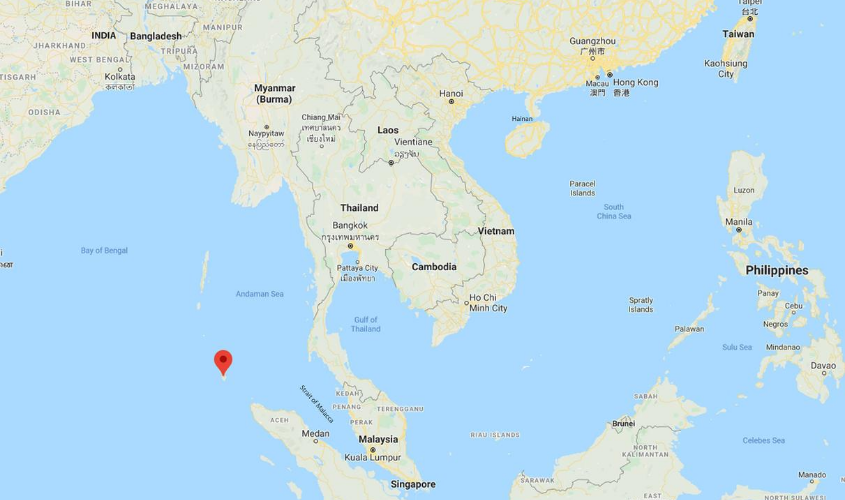In the 1970s, Trade Development Authority of India prepared a detailed report on the issue of attracting Hong Kong businesses to Great Nicobar Island, especially ethnic Indians.
China’s peaceful takeover of Hong Kong on 1 July 1997 was based on a properly signed agreement between the Government of UK and People’s Republic of China and was registered with the United Nations, in which the Chinese guaranteed a 50-year extension of its capitalist system. It, therefore, provided for the continuation of the existing British legal system until 2047. However, China’s move to change the same, in violation of the agreement, the imposition of its harsh national security law and the rise in tension with the West in general and the United States in particular, have jeopardized the future of Hong Kong as a global financial centre and a free port. As flight of capital takes place from Hong Kong, there will be a search for an alternate venue. On the south-west of Hong Kong is Singapore, another leading global financial centre, located at the confluence of the South China Sea and the eastern entrance of the Malacca Strait. While at the western entrance of the Malacca Strait is India’s Great Nicobar Island—the entry point to the Bay of Bengal and Indian Ocean.
Of course, China is not taking things lying down. It is trying to build Hainan island in the South China Sea as an alternative to Hong Kong. But without support from the Western countries can China do it on its own, especially when most of the rich countries of ASEAN too are not in its favour? So as businesses leave Hong Kong there is an opportunity for building an alternate centre.
Hong Kong has an active community of ethnic Indians who have been settled there for many years and would be feeling insecure now. It would be ideal for them to relocate to India and specifically to the Great Nicobar Island, once a hospitable environment and a free port is announced. What does this mean for India? Either we do nothing or leverage the opportunity now.
So how do we do it?
The last Indian island of the Andaman and Nicobar archipelago is the Great Nicobar Island, which is located barely 90 km from the tip of Indonesia’s Sumatra island and is near the western entrance of the Malacca Strait. So its strategic importance cannot be understated. It is 1,044 sq km in size which is bigger than that of Singapore (720 sq km) but slightly smaller than that of Hong Kong (1,106 sq km). It has a mountainous terrain and five rivers flowing through it, which means it has plenty of fresh water. The island was considered an ideal replacement for Hong Kong in the 1970s by the then Trade Development Authority. In 1969, 330 ex-servicemen’s families were settled in seven villages as a strategic move. They were allotted land and the Border Roads Organisation cleared 8,045 hectares of forest and developed infrastructure including roads for their settlement.
The then Trade Development Authority of India, which has since evolved into India Trade Promotion Organisation, had made a detailed three-volume report on the issue of attracting Hong Kong businesses to Great Nicobar Island (GNI), especially the ethnic Indians. However, the report was never properly read or implemented.
The report produced in the early 1970s needs to be reviewed and revised. The report had proposed that after the British left Hong Kong and Hong Kong merged with mainland China, a number of rich Indian business groups would look for a place to relocate. It was envisaged that the Great Nicobar island as a free port had great potential in attracting such people. As usual, no decision was taken by Government of India. However, the Great Nicobar still retains its potential due to its strategic location. However, about 2/3 of the island has since been declared either a biosphere reserve or the Galathea National Park. Only 1/3 of the landmass is available for development activities. A part of the land at the tip of the island at Indira Point has gone under shallow water including a lighthouse there because of the tsunami of 2004. This land can be reclaimed easily. In effect, around 307 sq km is presently available for development. This land use may have to be changed for strategic reasons. To overcome the issue of buildable land, a policy of high density construction policy can be adopted. Alternatively, some reduction of forestland can be undertaken.
Further, Great Nicobar Island does not come under the Tribal Act unlike the rest of Nicobar, though it does host a few hundred Shompen tribals who are at a food gathering stage and live in the forests. Friendly contacts have been established with them by the tribal department. There is a notification by the Andaman and Nicobar administration regarding protecting them. As they live in the jungle and have friendly contact with the tribal department officers, who give them rice etc., there is no problem. The island itself does not come under Tribal Regulation.
Presently there is a port at Campbell Bay with breakwater and an airfield nearby, which is part of the naval airbase called “BAAZ”. 300 ex-servicemen’s families were settled in this island with each allotted over 10 acres of land. They will be a great asset to the development of this island and will provide the land and manpower for developing resorts and businesses. Their land, once converted from agricultural to other uses, would be valuable.

The Andaman and Nicobar Administration has announced through a tender process a Container Transshipment Terminal (CTT) at Great Nicobar Island to attract a large number of ships—around 70,000 mentioned in the document, but perhaps more—that pass by it, while coming out of the Malacca Strait from South China Sea and vice versa. This project costing around Rs 10,000 crore, with its first phase to be completed by 2025, would be on a PPP basis and may include a Viability Gap Funding. This port will have deep water berthing facility and may also compete with the ports of Sri Lanka.
Further, another a project of strategic importance being implemented is the laying of a submarine optical fibre cable system from Chennai to Great Nicobar Island of 100 gigabit per second (gbps) for both voice and data, covering all the important islands of the Andaman and Nicobar group. This project has received environment clearance. The route length cable will be 2,200 km long. With this all the major islands will soon have robust and affordable telecom facilities.
While the proposed Container Transshipment Terminal is a step in the right direction, in order to compete as a free port, Great Nicobar will require an entirely new set of laws including a tax regime outside of the normal Indian system. A new administrative system outside even the Andaman & Nicobar administration will also be required. In fact, it may have to be taken out of the administrative control of the Ministry of Home Affairs and put under Ministry of Commerce or External Affairs.
It may be pointed out that this is the only part of the country which was under the Japanese during the Second World War for three and a half years. Not only do the Japanese know all these islands very well as they had fortified these islands, but they have also shown great interest in them. Japanese Prime Minister Shinzo Abe had mentioned these islands in his speech to the joint session of Indian Parliament. We could consider inviting the Japanese to develop this island. This is, therefore, the right time to announce the development of a free port at Great Nicobar Island.
Dr Sanat Kaul is author of the book, “Andaman and Nicobar Islands: India’s Untapped Strategic Assets” published by the Institute of Defence Studies and Analysis, New Delhi and was the former Chief Secretary of Andaman &Nicobar Islands as well as Deputy Commissioner, Nicobar District.

